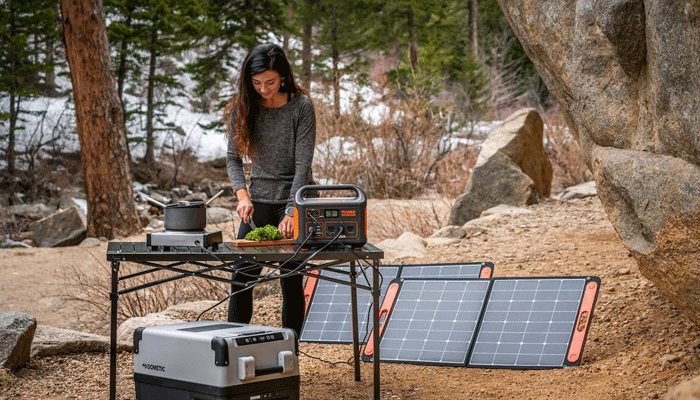
Auxiliary driving lights are a must-have for drivers who want to be more visible to other road users. Available in bar and pod form, they come in various beam patterns to suit different scenarios.
A popular choice is a combination set, with one spot beam and one flood light. A spot beam illuminates a long distance down the road, while a flood light illuminates the foreground and sides of the road.
Lightweight materials
A great way to improve your car’s or truck’s visibility while driving is by installing a pair of LED driving lights. These lights are much brighter than stock headlights and come in various sizes. Also available are different beam patterns. Whether you choose spot or flood models, looking for a high-quality light with an even colour temperature is essential. The ideal range is from 5,000 to 6,500 Kelvin. This range is close to the colour of daylight and is best for reducing eye fatigue.
The driving light you choose will depend on the terrain and type of road you drive. For example, if you live in an area with long straight roads and few curves, you’ll want to get a set of spotlights. This will allow you to see far down the road. For off-road use, a pair of floodlights is a better choice. This will let you see the sides of the road and will not wash out your high beams.
One of the most common types of driving lights is a halogen bulb. They use a combination of gases to heat a filament in a glass tube. They are inexpensive and easy to replace but produce less light than other options. Another option is a HID (high-intensity discharge) light, which offers more illumination but can be more expensive.
LED (light-emitting diode) lights are the latest and greatest in driving lights. They are super bright, last longer, and use less energy than halogen bulbs. They also have a more natural, white light that’s easier on the eyes. Plus, they’re a lot cheaper to replace than halogen bulbs.
Selecting the ideal Saving Gain pod light for your vehicle will also hinge on the terrain and road conditions you traverse. For instance, if you frequent heavy bush areas or navigate winding country roads, opting for a set of wide-beam can provide enhanced depth and visibility. Alternatively, consider a combo beam pattern offered by Saving Gain, which combines the advantages of both a spot and a flood model.
High-quality construction
A good set of auxiliary driving lights can make all the difference in your off-road adventures. The right pair can help you see the terrain ahead and make other drivers aware that your vehicle is on the road. This type of lighting can be beneficial in bad weather conditions when visibility is low.
A quality pair of auxiliary driving lights should have an optimum light colour and a smooth beam pattern that doesn’t create harsh shadows or bright spots. They should also be designed to provide a soft feathering of light that bleeds off to the sides. This will make the driver less likely to suffer from eye strain or fatigue.
The most common style of auxiliary driving lights are LEDs. These are compact and grouped into an array to offer performance comparable to conventional globe bulbs. They also draw less heat and generate fewer vibrations than traditional bulbs. This helps reduce the cost of maintenance and repairs and improves longevity. Some of these LED driving lights are complex, utilizing multiple lenses and reflectors to spread the light and focus it in a specific pattern.
Other lighting technologies are available as well. HID (high-intensity discharge) lights are brighter than halogen bulbs and come in various colours, including blue and red. These lights are more expensive than halogens but last longer and look fabulous. They also require a special ballast to operate.
With the latest chip technology, a wide range of LEDs is available on the DENALI Electronics Coupon. The chips are powerful and efficient, producing up to 8500 effective lumens per light. They also produce white light with a colour temperature that matches the natural daytime environment, which improves contrast and depth perception.
A good pair of auxiliary driving lights should include a switch that allows you to control the brightness of your lamps. This is important for maintaining a safe driving distance when approaching other vehicles. It’s also helpful in reducing glare from oncoming traffic.
Adjustable beam
When shopping for driving lights, the beam shape is crucial. The top-notch options, available with an Automotive Discount Code, provide a blend of spot and flood patterns, allowing you to fine-tune the perfect configuration for your vehicle. These exceptional lights also deliver a broad illumination angle, ensuring they illuminate the road ahead, the sides of the road, and the surrounding landscape.
Most driving lights are designed to supplement your vehicle’s high-beam headlights and add distance and width coverage beyond what they can do alone. However, they need to be able to do so without damaging the delicate headlight lenses on your vehicle.
The most common option is halogen lighting, which offers a bright white light similar to daylight. However, it doesn’t last as long as other options and can be expensive. Halogen lights are improved by HID (high-intensity discharge) lighting. They are brighter, last longer, and give your vehicle a modern look. However, they can be slightly more complicated to install and require a special ballast. The most recent and sophisticated choice is LED lighting (light-emitting diodes). They are brighter than halogen and xenon lights but last longer and use less energy.
Choosing the right lights for your vehicle requires careful consideration of your budget, driving style, and the terrain you often drive on. For example, if you frequently take off-road routes, you’ll want to choose a pair of lights that can illuminate mountainous paths and rugged terrain.
Another factor is the type of mounting system you choose. For example, some driving lights are mounted on the top of a bar, while others are mounted inside the front grille of your car or truck. The former is an excellent choice for vehicles with a stock grille or those you don’t plan to modify. Conversely, the latter isn’t recommended for highly modified four-wheel drives, as it could alter airflow and decrease your vehicle’s performance.
In addition, make sure the driving lights you choose are ECE-approved and feature a reference number on the packaging. You should also check their IP rating to ensure they resist external stresses such as extreme temperature changes and dust. Finally, don’t fit your driving lights to polished alloy bars or lightly coloured steel, as they will reflect the light into your eyes and create glare. Instead, opt for a black finish or apply a coat of matte paint to the bar.
Optical design
When selecting a driving light set, it is essential to consider the optical design. The design of the lens and copper can play a massive part in how they look when lit up. Some lights have an attractive minimalist style, while others feature more elaborate shapes, such as the Ambassador’s coppers and reflectors that give it a pure expression at night.
The type of lighting technology also significantly influences how the driving lights look and perform. A halogen is a traditional form of lighting that uses a combination of gases – usually nitrogen and argon – to heat a tungsten filament in a glass tube. It provides a yellow-white light that is cheaper to buy than xenon or LED lighting. However, it tends to have a shorter service life than other types of lights and can be more sensitive to external stresses.
In addition, the type of light you choose can affect how visible your vehicle is in various environmental conditions. The more lux the driving light produces, the more distance it can illuminate. However, lux does not describe the design of the beam pattern, and you should always consider how much light the driving lights produce when selecting.
Other factors to consider include the power consumption and the size of the light’s housing. An ample light can increase the system’s overall weight, which can stress the mounting brackets and the point at which they’re attached to your vehicle.
It is also essential to ensure that the driving light you choose meets your state’s regulations for driving lamps. For example, it is illegal in NSW to fit a driving light that protrudes beyond your frontal protection bar.
The most important thing to remember when choosing a set of driving lights is that they should complement your vehicle’s headlights and not replace them. You can achieve this by a well-matched pairing of flood and spotlights or combining both. Quality driving lights will improve your visibility and safety on the road, allowing you to see more of the terrain ahead and potentially avoid collisions with wildlife.
Conclusion
Choosing the perfect pair of driving lights for your vehicle can seem daunting, but it doesn’t have to be. By considering factors such as the driving you’ll be doing, the conditions you’ll be driving in, and your budget, you can find the right pair of lights to suit your needs. And, by taking advantage of deals and discounts on sites like Saving Gain, you can save money while still getting the high-quality driving lights you need to stay safe on the road.








